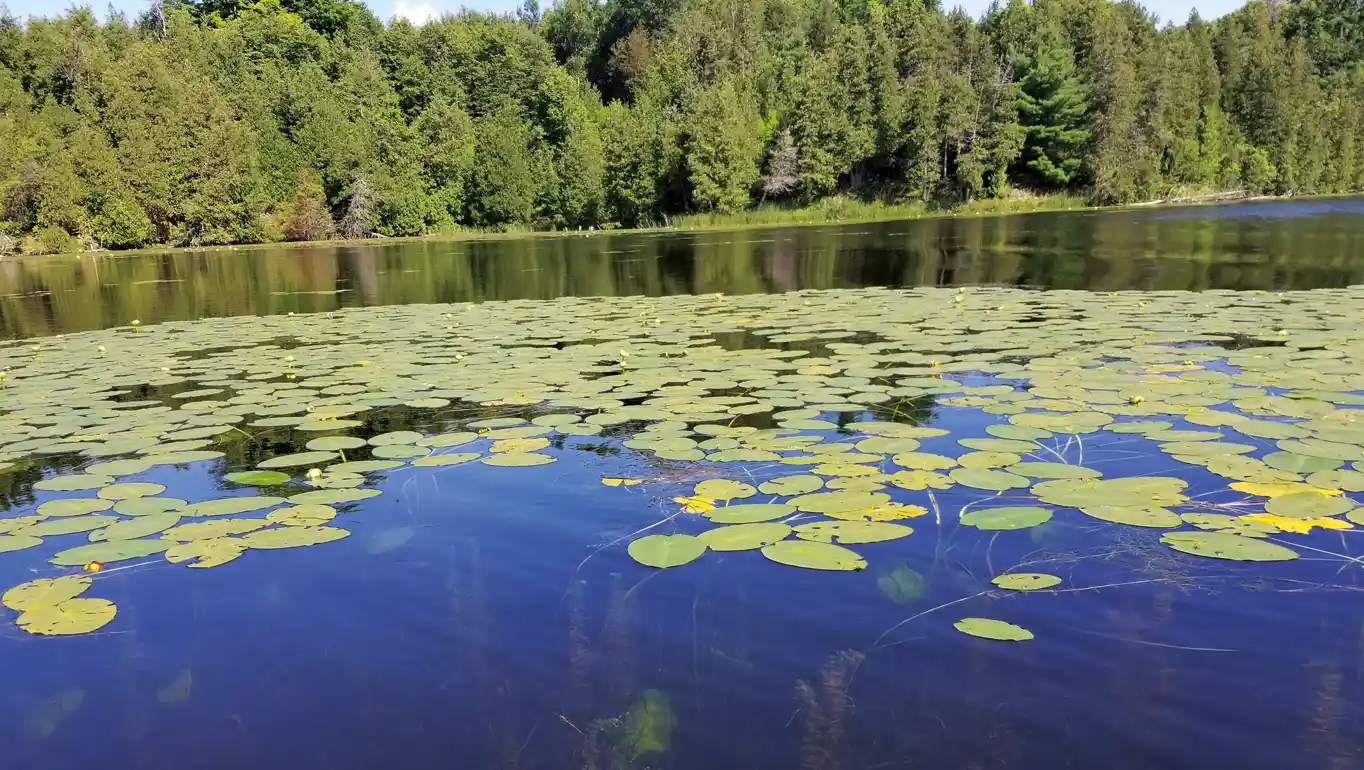Freshwater ecosystems serve as the source of our drinking water, the receiving waters for our wastes, and as essential resources for agriculture and industrial processes. Inland waters also support diverse plant and animal communities that benefit people in countless ways, as well as being highly valued destinations for recreation and tourism. Lakes and rivers provide nutrition for some of the world’s most food-insecure regions, and the cultural practices of Indigenous peoples are often centered on these areas. Furthermore, we are only now beginning to learn about many of the potential benefits to humanity that freshwaters can provide, such as novel cancer treatments from amphibian skin extracts.
Despite their unmistakable importance, freshwater ecosystems are also subject to extreme levels of degradation and loss. Wetlands have been infilled, rivers have been diverted and dammed, lakes have been polluted and biological and aggregate resources have been overexploited. In addition, invasive species have been widely introduced. Of critical importance are the effects of recent climate change —the big threat multiplier— often amplifying other environmental issues and affecting not only the distribution (quantity) of water, but also the quality of freshwater supplies.
Alarmingly, the recent WWF Living Planet Index reports that, since 1970, biodiversity losses for freshwater ecosystems are approaching 90% and greatly surpass the losses in marine and terrestrial ecosystems. For example, amphibians are the most imperiled vertebrates on the planet and freshwater molluscs are among the most threatened invertebrates. What is particularly alarming is that species declines are not stopping. Oddly, this freshwater biodiversity loss is rarely mentioned in the media, especially when compared to other ecosystems.
Without water there can be no life, so one must wonder how this dire situation came to be? One likely reason is that it is easy to ignore what happens and lives “under the waterline” because, in many cases, underwater life is not readily observable. Alarms are only raised when, for example, dead fish are seen floating in the water or algal blooms choke our waterways, but stressors have many less obvious impacts that happen incrementally and cumulatively, often occurring out of view and slowly over time.
It is not too late to reverse course. Doing so will require the efforts of many, but the first step is to recognize and better communicate the problems, while also showing that they can be fixed. Grassroots efforts, including local stewardship and restoration activities that focus on the connections between healthy freshwater ecosystems and healthy people and communities, are desperately needed.
Similarly, international bodies need to put freshwater ecosystems on the agenda. Recall that the UN Sustainable Development Goal 14 (life below water) is entirely marine in focus, whereas freshwater is considered solely for its roles in drinking water and sanitation (Goal 6). Freshwater ecosystems clearly deserve bespoke protections and conservation efforts. Their value was finally recognized in the 2022 Kunming-Montreal Biodiversity Framework outcomes where, for the first time, freshwater “lakes, rivers and wetlands” were mentioned alongside oceans and terrestrial systems. Freshwater restoration success stories are growing in number and, central to almost all of them, is a strong collaboration among scientists, community members, politicians, industry, and NGOs that work towards common goals.
The toolbox used to protect and restore freshwater ecosystems is expanding rapidly and evidence shows that we can implement meaningful actions and interventions. For example, we know how to design stormwater conveyance systems that not only mitigate urban flooding, but also create spaces for people to connect with nature and for wildlife to thrive. We also know how to better design fish passage facilities for dams and how to release water in ways that emulate natural flow regimes.
Another protection method we can use is to control nutrient inputs from wastewater and agriculture to prevent eutrophication and harmful algal blooms. Whilst these are all good steps to take, there is often a disconnect between knowledge and action, including learning from past successes and failures, such that these interventions are rarely applied in a meaningful and systematic way. To overcome these issues, it is fundamental that both public and political motivations join forces to take action. From acid rain to ozone depletion to the impacts of DDT on aquatic birds, we have shown that we can come together to address complex problems when there is a will to do so. The costs of the freshwater biodiversity crisis are becoming unmistakable and acting now is a moral imperative for our planet and for our collective future.



